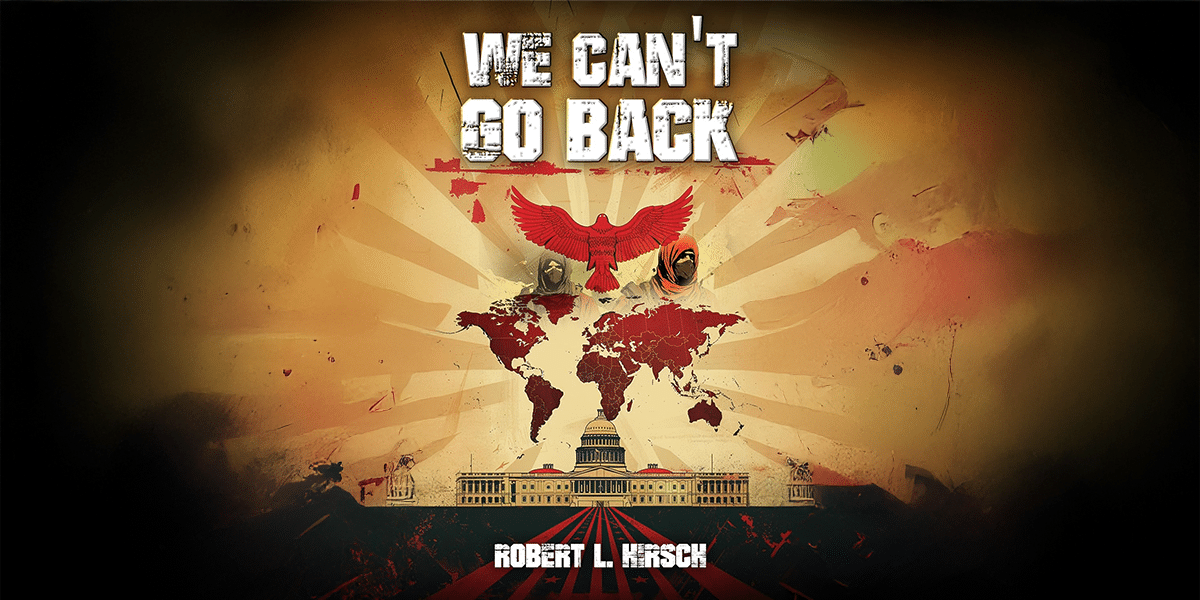By: Jason Gerber
In recent years, the world has witnessed an alarming rise in mass shootings. Public places that were once considered safe—schools, theaters, marketplaces, and places of worship—have all turned into settings for unimaginable violence.
In his novel “We Can’t Go Back,” Dr. Robert L. Hirsch provides a haunting depiction of such events and the societal responses they invoke.
The Rise of Mass Shootings
“We Can’t Go Back” captures a world where mass shootings and other forms of public violence are increasingly common. The narrative describes an America plagued by random acts of violence. Schools, theaters, arenas, and marketplaces—places where people gather to enjoy themselves or worship—are all targeted. Sarah, a character in the book, often finds herself overwhelmed by news of these tragedies, affecting her daily life and peace of mind.
In one instance, the book describes crashes and shootings at sold-out rock concerts. The shooters position themselves in distant buildings, making it nearly impossible for the crowds to spot them until it’s too late. The frequency and randomness of these acts of violence have only grown, making it hard for authorities to investigate each case thoroughly.
Societal Panic and the Role of Media
Media plays a significant part in shaping public perception of these events. Each incident of violence is brought live to people’s screens, reinforcing a constant state of fear and insecurity. The media’s continuous coverage helps spread the message that no place is safe, thereby heightening public anxiety.
One of the themes in “We Can’t Go Back” is how these incidents are relayed millions of times over social media and television. Repeated broadcasts create a mantra of fear but also drive home the need for action. This widespread coverage ignites public debate and outrage, pushing communities to respond in various ways.
Public Safety Measures
In “We Can’t Go Back,” the government and other authorities find themselves scrambling to implement more effective safety measures. However, the nature of these attacks—random, widespread, and perpetrated by individuals with no prior criminal or extremist affiliations—makes this exceedingly difficult.
Public safety measures include increased security at events, more robust background checks for firearm purchases, and active shooter drills in schools and workplaces. Communities begin to install cameras and alarm systems in public places, hoping to preempt potential threats. Metal detectors and security checks become more common at public gatherings.
Personal Decisions About Self-Defense
One of the significant societal shifts depicted in “We Can’t Go Back” is the rise in personal decisions about self-defense. As public trust in the ability of authorities to keep them safe dwindles, more individuals begin to take their safety into their own hands.
Some people start carrying firearms for self-defense, enrolling in shooting classes, and seeking permits for concealed carry. Others invest in more passive forms of protection, like personal alarms and self-defense training classes. The book portrays a society that, while more armed and alert, is also more fearful and suspicious.
Community Responses and Grassroots Movements
A unique reaction captured in “We Can’t Go Back” is the formation of small grassroots movements. Spurred by shared fear and outrage, communities begin to come together to discuss how to protect themselves and each other. These gatherings transcend racial, religious, and social lines, uniting people in their shared concern for safety.
One character in the book gives a stirring speech calling for society to stand up against hate and violence. Local media picked up on this speech, which spread like wildfire and helped start a movement called “Stand Up for Yourself, Your Neighbor, and Your Country.” Communities from various backgrounds start meeting to discuss safety, advocacy, and mutual support.
Confronting Hate and Bias
Another aspect the book portrays is how these times of crisis often bring underlying societal biases to the forefront. The tension and fear exacerbate racial, religious, and social tensions. People look for someone to blame, sometimes targeting marginalized communities unfairly.
However, the same societal stress also catalyzes a countermovement that demands accountability and justice. As lines blur between protected spaces and targets, a call for inclusive, united communities grows louder.
This sentiment is captured well in the book, as characters make efforts to bridge divides and stand together against common threats.
Lessons from “We Can’t Go Back”
The depiction of societal response to mass shootings in “We Can’t Go Back” by Dr. Robert L. Hirsch offers valuable lessons on public safety and personal responsibility. While the book portrays a world mired in fear and violence, it also shows the strength of the community and the impact of proactive leadership.
The rise in personal self-defense measures, increased security protocols, and spontaneous grassroots movements all reflect genuine societal reactions to constant threats of violence. However, they also showcase that amid fear and insecurity, unity and collective action can offer a ray of hope.
The need for clear public safety measures, robust community responses, and accountability for hate and bias is evident. Reflecting on these themes from “We Can’t Go Back ” reminds us that while no place is safe, a united community can find a way to stand up against violence and build a safer, more inclusive society.
By addressing these contemporary fears through a detailed narrative, “We Can’t Go Back” stands out as a poignant reminder of the complexities surrounding global terrorism and its far-reaching impacts on our world today. It is a must-read for anyone looking to understand the multifaceted nature of terrorism as portrayed in modern storytelling.
Published by: Khy Talara














